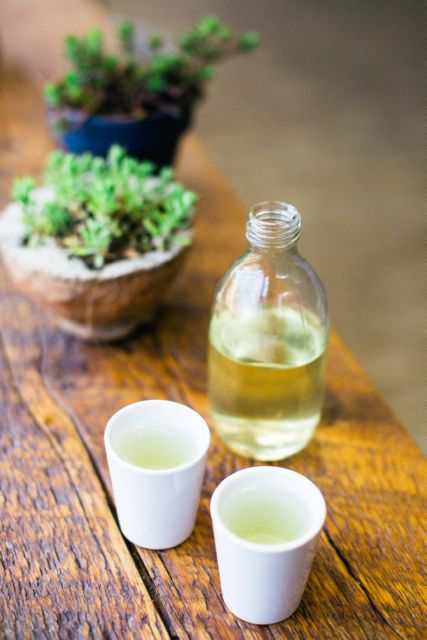There’s a lot more to sake than the clear, hot beverage served in sushi restaurants. While the ancient Japanese spirit is made in a manner similar to beer (it’s brewed), it can have an alcoholic content of 15%-20%, a level comparable to fortified wines. And there’s an impressive — almost bewildering — array of styles to explore.
Sake’s origins are deep. According to a history of the drink at japansake.or.jp, the oldest written records about sake are found in third century texts from Asia. Like many ancient beverages, it’s a deceptively simple drink. At its most elemental, pure sake is brewed using four ingredients, explains Sergio Granados, former lead bartender at the now-closed Futo Buta. “Rice, water, yeast and kōji,” he says, explaining that kōji is a fungus, “the microorganism that breaks down the rice.”
Patrick Shearer, head brewer at Ben’s American Sake, says that when the powdered black mold kōji is mixed with rice, it converts the starches in the rice into sugar. “And the yeast ferments that sugar, creating alcohol and carbon dioxide.” Those processes — happening at the same time — are called parallel fermentation. The resulting beverage is one like no other; its character sets it apart from beer, wine and spirits and into a world of its own.
And it’s a big world. Though most people are familiar with one type of sake, the “table” sake served hot in restaurants, there are in fact seven classifications of the brewed alcoholic beverage. Most higher-quality sake is served cold, explains Shearer. “Heating can hide some of the off flavors,” he says.
The amount of the rice grain removed before fermenting is a key factor in a sake’s quality, and the classifications are illustrated in a pyramid graphic that’s shared widely in print and online (see one example at tengusake.com/sake-guide/types-of-sake/). Among “pure” varieties — meaning sake made without the addition of brewer’s alcohol — there is junmai (at least 30% of the rice grain removed), junmai ginjo (40%) and at the very top, junmai daiginjo, with at least 50% of the grain removed.
Non-junmai sake is made with extra alcohol added. At the bottom of that side of the pyramid, nonpremium futsushu (“table” sake) is made using rice with less than 30% of the rice grain removed. Sometimes table sake is made using the byproduct flour left after the polishing of rice for premium sake.
Table sake represents more than three-quarters of all sake brewed, and Granados allows that even table sake can be good: It’s suited to serving hot (which isn’t true of junmai sake), and it has a longer shelf life. Premium non-junmai sakes are classified according to the same levels of rice polishing: honjozo (30%), ginjo (40%) and daiginjo (50%).
Polishing the rice isn’t merely a gimmick. Removing the outer layers of the rice grains before fermentation changes the character of the sake. “The more the rice is polished, the more that the floral aromas inside of it are released,” Granados says. Less polished rice yields a sake that is “more earthy, more mushroomy,” he says. Those outer layers, notes Shearer, contain “impurities, harsher flavors and some color.”
If all that isn’t confusing enough, there’s also nigori sake, a wholly different classification. Translated as “cloudy,” it exists in varieties that can be placed almost anywhere on the pyramid. “Its milky color comes from residual yeast and dissolved rice,” Shearer explains. The resulting thicker mouthfeel makes nigoris well suited for pairing with spicy dishes, says Granados.
Sake is most often enjoyed straight, but it mixes well in cocktails as well (see sidebar). Combined with sparkling water, it can make a nice spritzer. In fact, one of Ben’s most popular offerings is Yu-Tang, a yuzu flavored, low-alcohol sake spritzer.
Granados marvels at the variety and versatility of sake. “Starting with four simple ingredients, you can go to the moon and back,” he says.



Before you comment
The comments section is here to provide a platform for civil dialogue on the issues we face together as a local community. Xpress is committed to offering this platform for all voices, but when the tone of the discussion gets nasty or strays off topic, we believe many people choose not to participate. Xpress editors are determined to moderate comments to ensure a constructive interchange is maintained. All comments judged not to be in keeping with the spirit of civil discourse will be removed and repeat violators will be banned. See here for our terms of service. Thank you for being part of this effort to promote respectful discussion.